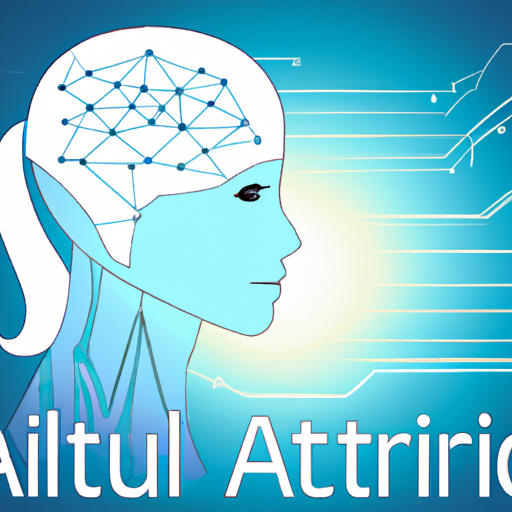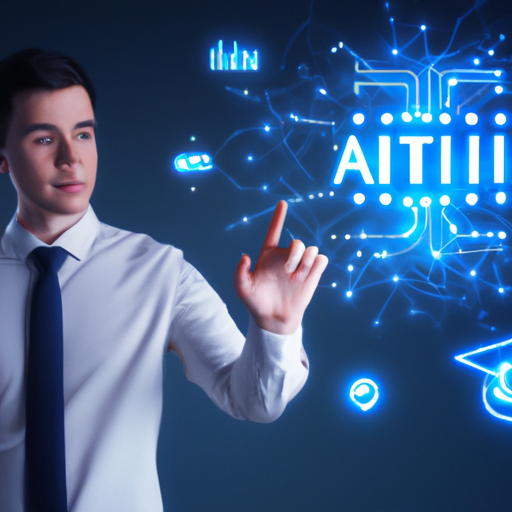-
Table of Contents
“Unlock the Power of AI: Explore the Possibilities of Different Types and Their Applications!”
Introduction
Artificial Intelligence (AI) is a rapidly growing field of technology that has the potential to revolutionize the way we live and work. AI is a broad term that encompasses a variety of different technologies, from machine learning and natural language processing to robotics and computer vision. AI has been used in a variety of applications, from healthcare to finance, and its potential is only beginning to be explored. In this article, we will provide an overview of the different types of AI and their applications. We will discuss the different types of AI, their advantages and disadvantages, and the potential applications of each type. We will also discuss the ethical implications of AI and the potential risks associated with its use. Finally, we will provide some examples of AI applications in the real world.
AI in Education: Automated Grading
AI in Education: Automated Grading
The use of Artificial Intelligence (AI) in education is becoming increasingly popular as technology advances. One of the most common applications of AI in education is automated grading. Automated grading is the use of AI algorithms to grade student assignments, such as essays, multiple-choice tests, and other written assignments.
Automated grading has several advantages over traditional grading methods. First, it is much faster than manual grading. AI algorithms can grade large numbers of assignments quickly and accurately, allowing teachers to focus their time and energy on other tasks. Second, automated grading is more consistent than manual grading. AI algorithms are not subject to the same biases and inconsistencies that can occur when humans grade assignments. Finally, automated grading can provide more detailed feedback to students than manual grading. AI algorithms can provide detailed feedback on grammar, spelling, and other aspects of writing that can help students improve their writing skills.
Despite these advantages, automated grading is not without its drawbacks. AI algorithms are only as good as the data they are trained on, and they can be prone to errors if the data is not of high quality. Additionally, automated grading does not take into account the context of an assignment, which can be important when evaluating student work. Finally, automated grading can be expensive to implement, as it requires specialized software and hardware.
Overall, automated grading is a useful tool for educators, but it is important to consider the advantages and disadvantages before implementing it in the classroom. Automated grading can save time and provide more consistent feedback to students, but it is not without its drawbacks. Educators should carefully weigh the pros and cons of automated grading before deciding whether or not to use it in their classrooms.
AI in Healthcare: Diagnosis
AI in healthcare is revolutionizing the way medical diagnosis is conducted. AI-driven diagnosis is a process that uses artificial intelligence (AI) to analyze medical data and provide a diagnosis. AI-driven diagnosis is becoming increasingly popular in healthcare due to its ability to quickly and accurately diagnose a wide range of medical conditions.
AI-driven diagnosis is based on the use of machine learning algorithms. These algorithms are trained on large datasets of medical data, such as patient records, medical images, and laboratory results. The algorithms are then used to analyze the data and provide a diagnosis. AI-driven diagnosis is able to quickly and accurately identify patterns in the data that may be indicative of a particular medical condition.
AI-driven diagnosis has the potential to revolutionize the way medical diagnosis is conducted. AI-driven diagnosis can provide more accurate and timely diagnoses than traditional methods, which can lead to improved patient outcomes. AI-driven diagnosis can also reduce the amount of time and resources required for diagnosis, which can lead to cost savings for healthcare providers.
AI-driven diagnosis is still in its early stages, and there are still many challenges that need to be addressed before it can be widely adopted. For example, AI-driven diagnosis requires large datasets of medical data, which can be difficult to obtain. Additionally, AI-driven diagnosis is still subject to errors, and there is a need for further research and development to improve accuracy.
Despite these challenges, AI-driven diagnosis is becoming increasingly popular in healthcare. As AI-driven diagnosis continues to improve, it has the potential to revolutionize the way medical diagnosis is conducted and lead to improved patient outcomes.
and Chatbots
Artificial Intelligence (AI) is a rapidly growing field of technology that is revolutionizing the way we interact with machines. AI is the ability of a computer program or machine to think and learn. It is used to create intelligent systems that can understand, reason, and act in the world. AI is used in a variety of applications, from self-driving cars to virtual assistants.
Chatbots are computer programs that use AI to simulate human conversation. They are used to provide customer service, answer questions, and provide information. Chatbots are becoming increasingly popular as they are able to provide a more personalized experience for customers.
AI and chatbots are transforming the way businesses interact with customers. AI can be used to automate customer service tasks, such as responding to customer inquiries and providing product recommendations. Chatbots can be used to provide personalized customer service, such as providing product recommendations and answering customer questions.
AI and chatbots are also being used to improve the efficiency of business processes. AI can be used to automate mundane tasks, such as data entry and analysis. Chatbots can be used to automate customer service tasks, such as responding to customer inquiries and providing product recommendations.
AI and chatbots are revolutionizing the way businesses interact with customers. AI can be used to automate customer service tasks, such as responding to customer inquiries and providing product recommendations. Chatbots can be used to provide personalized customer service, such as providing product recommendations and answering customer questions. AI and chatbots are transforming the way businesses interact with customers and are set to revolutionize the way we interact with machines.
and Natural Language Processing
Artificial Intelligence (AI) is a field of computer science that focuses on the development of intelligent machines that can think and act like humans. AI is used in a variety of applications, from robotics to natural language processing.
Robotics is the application of AI to the design and development of robots. Robots are machines that can be programmed to perform a variety of tasks, from simple repetitive tasks to complex tasks that require problem-solving and decision-making. AI is used to create robots that can interact with their environment and respond to changes in their environment.
Natural language processing (NLP) is the application of AI to the analysis and understanding of human language. NLP is used to create computer programs that can understand and interpret natural language, such as spoken or written language. NLP is used in a variety of applications, from voice recognition systems to automated customer service systems.
AI is a rapidly growing field of computer science, and its applications are becoming increasingly important in our everyday lives. AI is used to create robots that can interact with their environment and respond to changes in their environment, as well as to create computer programs that can understand and interpret natural language. AI is also used in a variety of other applications, such as medical diagnosis, financial analysis, and autonomous vehicles. As AI continues to develop, its applications will become even more widespread and important.
Types of Artificial Intelligence: Machine Learning
Artificial Intelligence (AI) is a rapidly growing field of computer science that focuses on creating intelligent machines that can think and act like humans. AI has become increasingly popular in recent years, and there are now several different types of AI available. One of the most popular types of AI is Machine Learning.
Machine Learning is a type of AI that uses algorithms to learn from data and make predictions. It is based on the idea that machines can learn from experience and improve their performance over time. Machine Learning algorithms are used in a variety of applications, such as image recognition, natural language processing, and robotics.
Machine Learning algorithms are divided into two main categories: supervised and unsupervised. Supervised algorithms are used when the data is labeled and the algorithm is given a set of rules to follow. Unsupervised algorithms are used when the data is not labeled and the algorithm must learn from the data itself.
Machine Learning algorithms can be used to solve a variety of problems, from predicting stock prices to recognizing objects in images. They are also used in many applications, such as self-driving cars, facial recognition, and medical diagnosis.
Machine Learning is an important part of the AI landscape and is becoming increasingly popular as more applications are developed. It is a powerful tool that can be used to solve complex problems and create intelligent machines.
Conclusion
In conclusion, AI has become an integral part of our lives and is being used in a variety of applications. AI can be used to automate mundane tasks, improve decision-making, and even create new products and services. Different types of AI, such as machine learning, deep learning, and natural language processing, are being used to solve complex problems and create new opportunities. AI is an ever-evolving technology that will continue to shape the future of our world.



